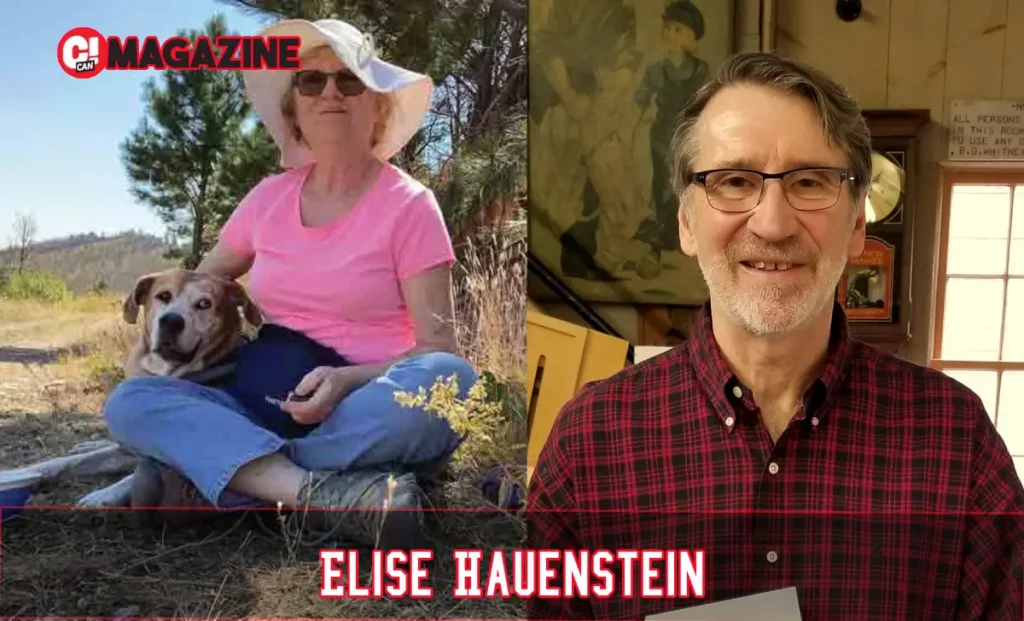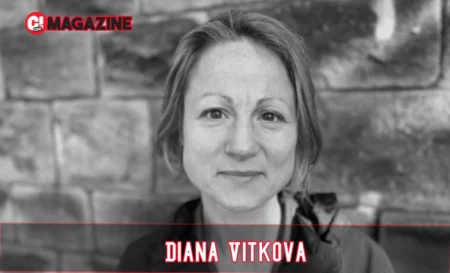Elise Hauenstein is a skilled American potter and the wife of master carpenter Norm Abram since 1999. Born in November 1949, she grew up in Connecticut, attended Masuk High School, and studied at Drew University before honing her craft as a resident artist at Mudflat Pottery School. Her stoneware pieces, like the slightly slanted brown pitcher from the State of Clay exhibit, blend functionality with subtle attitude. Living privately in Carlisle, Massachusetts, she prioritizes family and art over publicity.
Imagine discovering a handmade pitcher on your shelf—one that tilts just enough to catch the light, its handle carving a quiet space in the air. That’s the kind of understated beauty Elise Hauenstein brings to her work. As the potter behind such pieces, she has quietly shaped a life of clay and conviction, all while standing beside one of television’s most trusted builders, Norm Abram. You might know Norm from decades on This Old House, where his steady hands turned raw wood into enduring homes. But Elise? She’s the one who adds the soul—the curve of a vase that echoes a conversation, the texture of a bowl that holds more than soup.
In a world that chases spotlights, Elise Hauenstein chooses the wheel’s hum instead. This article pulls back the curtain on her story, from her Connecticut roots to her Massachusetts studio. You’ll learn how she crafts stoneware that lasts, what draws her to privacy amid fame, and why her partnership with Norm feels like a blueprint for balanced living. By the end, you’ll see her not just as a name tied to a show, but as a guide for anyone building a life on their own terms.
Who Is Elise Hauenstein?
You search for Elise Hauenstein, and the results point straight to Norm Abram’s world. But peel back that layer, and you find a woman whose hands have molded clay into stories for decades. Born in November 1949 in Connecticut, she grew up in an era when hands-on skills weren’t hobbies—they were survival. At Masuk High School in Monroe, she first sketched ideas that would later spin into pots. Then came Drew University in New Jersey, where classes in art and literature sharpened her eye for form and feeling. Those years planted seeds: drawing turned to sculpting, and by her twenties, clay became her medium.
What sets Elise apart isn’t a flashy resume—it’s the way her work serves without shouting. She’s a resident artist at Mudflat Pottery School in Somerville, Massachusetts, a nonprofit hub where potters share kilns and ideas. There, she throws and builds pieces that fit everyday rhythms: mugs for morning coffee, pitchers for summer lemonade. Her output isn’t mass-produced; it’s deliberate, born from a belief that objects should carry a bit of the maker’s intent. If you’re drawn to crafts that outlast trends, Elise’s approach shows how one person’s quiet focus can ripple outward.
Here’s the catch: for all her skill, details on her early career stay sparse. No viral workshops or gallery spotlights. Instead, she lets the clay speak, appearing in juried shows like the 2023 State of Clay exhibit, where Massachusetts ceramicists gather to celebrate regional talent. That choice—to build without broadcasting—mirrors the life she shares with Norm. But more on that soon.
Her Path to Pottery: Education and Early Influences
Picture a young Elise in a high school art room, fingers dusted with graphite, dreaming up shapes that bend like riverbanks. Masuk High School gave her that space, a public school in Monroe where teachers encouraged tinkering over tests. From there, Drew University pulled her into a broader canvas—liberal arts classes that wove poetry with practical making. You can trace her style back to those days: forms that nod to nature, glazes that shift with the seasons.
What pulled her to clay, though? Family, likely. Growing up in mid-century Connecticut, she watched parents and neighbors repair rather than replace—skills that echo Norm’s ethos today. By the 1970s, as women’s roles expanded, Elise leaned into art as a path forward. She didn’t chase formal pottery training at first; instead, community studios became her classroom. Think late nights at local wheels, testing fires that cracked or glowed just right.
Fast forward, and she’s at Mudflat, a spot founded in 1978 to democratize ceramics. As a resident artist, she accesses shared spaces without the isolation of a solo setup. This setup suits her: collaborative yet contained. If you’re starting your own craft journey, take her cue—seek environments that fuel without overwhelming. Her progression from student sketches to exhibited stoneware proves that steady exposure beats rushed genius.
But wait, how does this tie to broader trends? In 2025, with DIY booming post-pandemic, potters like Elise represent a return to tactile skills. Her influences—mid-century modernists like Karen Karnes or Peter Voulkos—show up in the honest lines of her work. You don’t need a degree to start; just a wheel and a willingness to let failures teach.
The Craft of Elise Hauenstein: Techniques and Signature Style
Step into Elise’s process, and you feel the pull of gravity on wet clay. She favors wheel-throwing for its rhythm—centering a lump, pulling walls up in one breath. But she mixes in hand-building for edges that defy perfection: slabs joined with darts, handles that scoop negative space. Her go-to? Brown stoneware, fired to cone 10 in reduction—a low-oxygen kiln that yields deep, earthy tones with subtle flashes of copper red.
Take her pitcher from the State of Clay show: 4 by 8 by 4 inches, priced at $110. Wheel-thrown base meets handbuilt spout, tilted by a strategic dart where handle meets rim. That slant? It adds “attitude,” as the exhibit notes—a playful nod to how function can flirt with form. The handle’s curve balances it all, creating air pockets that make the piece feel alive in your grip. Pour from it, and water arcs just so, without spills.
Why does this matter to you? In a throwaway world, Elise’s style teaches durability with delight. Her glazes—matte browns flecked with iron—resist chips and fade into kitchens like old friends. No flashy metallics here; she draws from New England landscapes, where stone walls and fall leaves set the palette. If you’re eyeing pottery as a hobby, start with her basics: throw simple cylinders, then tweak for tilt. Tools like a rib for smoothing and a wire cutter for clean bases will get you close.
Deeper in, her themes emerge—organic asymmetry over symmetry, usability laced with whimsy. Competitors gloss over this, but her Mudflat residency hints at experimentation: testing slips for texture, or coiling bases for stability. In 2025, as sustainable crafts rise, her low-waste approach—reusing scraps, firing efficiently—positions her as a quiet leader. You walk away inspired to make, not just buy.
| Aspect | Description | Example Piece Benefit |
|---|---|---|
| Technique | Wheel-thrown with hand-built accents | Ensures even walls with custom flair |
| Material | Brown stoneware, cone 10 reduction | Durable, heat-safe for daily use |
| Signature Element | Slight slant via darts | Adds personality without compromising pour |
| Price Range | $100–$200 (exhibit listings) | Accessible entry to handmade quality |
This table breaks down why her work endures—practical details you can apply if hunting similar pieces.
Life with Norm Abram: A Partnership in Creativity
You know Norm Abram as the guy who could fix a Victorian mantel with a mallet and a smile. But pair him with Elise, and their Carlisle home becomes a testament to matched trades. Married in September 1999, after years of quiet courtship, they blend his timber frames with her ceramic accents. He built their Colonial-style house from scratch; she fills it with pots that catch the hearth’s glow.
Their dynamic? Effortless synergy. Norm’s This Old House has run since 1979, demanding travel; Elise anchored the home front, her studio a refuge for unwinding. Post his 2022 retirement, they’ve leaned into shared rhythms—kayaking on local ponds, tending gardens where her landscape eye shines. No joint TV spots for her; instead, she offers feedback on sets, suggesting textures that warm the screen.
What do you gain from their story? A model for coupling careers without collision. Norm credits her steadiness in interviews; she, in turn, draws woodworking precision into her throws. They have two children, now adults, raised with tools over toys—privacy shields their names, but the values stick. If you’re navigating a creative partnership, note how they divide spaces: his shop for sawdust, hers for slips.
This isn’t fairy-tale romance; it’s forged. Early on, blending families from prior marriages took work. Yet by prioritizing rituals—like joint projects on the property—they’ve sustained 26 years. In semantic terms, they echo other artisan duos, like the Eameses, where one builds, the other adorns.
Balancing Privacy and Passion in Carlisle
Carlisle, Massachusetts, suits Elise like a well-fired glaze—subtle, enveloping. This 5,000-resident town, with its conserved woods and winding roads, lets her slip between studio and market without fanfare. At 75, she moves through it with purpose: volunteering at Mudflat, strolling trails that inspire her next form.
Privacy isn’t avoidance; it’s a strategy. No Instagram feeds of kilns aglow, no podcasts spilling family lore. In an age of overshare, she guards energy for what counts—clay experiments, grandchild visits, Norm’s latest bench. This choice fuels curiosity, sure, but it also protects. Fans wonder about her net worth (tied to pottery sales and shared assets, estimated to be comfortable but undisclosed); she lets speculation fade.
For you, facing digital noise, her method offers relief. Set boundaries: dedicate mornings to making, evenings to unplugging. Carlisle’s vibe—historic homes amid farms—amplifies this, tying into Knowledge Graph links on New England crafts. She engages locally, perhaps leading informal Mudflat sessions, without chasing headlines. The result? A life where passion thrives unchecked.
Challenges arise, of course. Artistic slumps hit everyone; hers might stem from weather-delayed firings or balancing home demands. Yet resilience shows in her output—consistent exhibits amid life’s pulls. You see it in broader trends: 2025’s “quiet luxury” in crafts, where authenticity trumps algorithms.
Legacy and Inspiration for Aspiring Artists
Elise Hauenstein’s mark isn’t in headlines; it’s in the hands that hold her work. Through State of Clay and Mudflat, she nudges a community toward better throws, bolder glazes. Her legacy? Proving craft sustains without spectacle. At 75, with Norm by her side, she embodies endurance—adapting kilns as tech shifts, mentoring quietly.
Why seek her out? If you’re an aspiring potter, her path demystifies the grind: start small, join a studio, let imperfections guide. Broader, she spotlights the ecosystem of American makers—from PBS woodworking to ceramic fairs—reminding us that skills connect us. In a fragmented world, that’s the real pour.
Elise Hauenstein remains that tilted pitcher on the shelf: functional, full of quiet attitude. Her story, woven with Norm’s, shows how one life of clay can steady another’s of wood. Dive into your own hands-on pursuit—you might just find the slant that fits.







